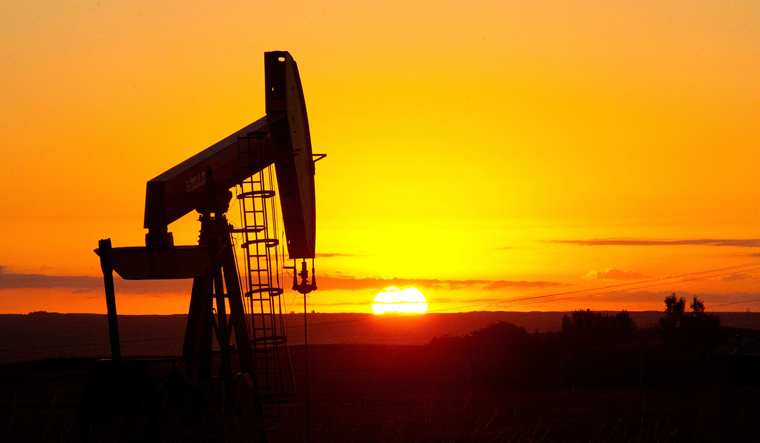On Friday, the rupee weakened against the dollar to cross 74, the lowest it has been since October 2018, a year when it was Asia’s worst-performing currency.
As of Sunday, it was still hovering above 74, putting it close to its highest level ever recorded.
The reasons were many: The takeover of Yes Bank by the RBI, coronavirus fears that have shaken economies worldwide prompting a global stock sell-off, and uncertainty over whether the RBI would turn to a rate cut to help counter-act the effects of the virus outbreak on the economy.
On the last point, the US Federal Reserve has already cut rates by half a percentage point—its biggest one-time cut since the 2008 financial crisis. In 2019, the RBI reduced interest rates five times in a row.
RBI governor Shaktikanta Das told Bloomberg that a rate cut was among the policy options before the, the others being supporting the market through liquidity measures. He also said that he expected central banks of the world’s large economies to have some form of discussion, possibly by video-conference, in the near future.
A rate cut could make it cheaper for banks to borrow from the government and by extension, for customers to take out loans from their banks. However, banks often take time to pass these benefits on and some experts feel that earlier rate cuts had no significant impact on lending. SBI Research had cautioned against a rate cut on the grounds that it could lead to the creation of asset bubbles and “possibly no correction in demand”.
Meanwhile, while the weaker rupee normally makes it more expensive to import oil, the decline in global oil prices has counter-acted against this effect. Kotak Mahindra CEO Uday Kotak tweeted about this on Sunday, saying the $20 drop in prices in recent times could save India $30 billion.
Amidst turbulence and the virus, some good news - oil at $45/ barrel. Recent $20 drop saves India $30 billion per annum. Also global interest rates have collapsed making money cheap.
— Uday Kotak (@udaykotak) March 8, 2020
Let’s leverage these for policy to boost growth.
Oil prices reached a four-year low on Friday after Russia failed to reach an agreement with fellow OPEC+ members to cut oil production by 1.5 million barrels a day in a bid to shore up the dropping prices.
Leading oil-producer Saudi Arabia has since showed signs of wanting to increase production according to WorldOil, even after it dropped prices on Saturday in the single largest cut in 20 years. This in turn sparked fears of a price war, affecting share prices in the Gulf states (the Saudi stock market dived by 8.3 per cent while the price of Aramco stocks dropped 9.1 per cent to 30 riyals, below their IPO-launch level of 32 riyals).
The benefits have accrued to India, where petrol and diesel rates have seen steady decline. Chemical companies can also benefit from the drop, as do airlines that can now spend less on fuel.
Likewise, a weaker rupee may be beneficial for exports which had seen continual decline in 2019, falling for the sixth straight month as of January. However, this depends on what is being exported: Petroleum products constituted 13.42 per cent of overall outward shipments according to commerce secretary Anup Wadhawan, who had attributed the fall in petrol prices at the end of 2019 to the decline in petroleum product exports.
At a time when worldwide manufacturing exports are on the decline globally, India stands a chance to benefit if its export pricing can get more competitive on account of a weaker rupee. The decline of manufacturing in China can also benefit Indian industries looking to fill the gaps in global supply chains. However, China’s decline cuts both ways as India imports significantly from China, its biggest trading partner, and many industries rely on Chinese imports.
While a weak rupee can help the pharma sector with exports, limits on the export of 26 key ingredients in a bid to manage supply chains have affected these prospects. Add to this the reliance of pharma companies on imports and the problem is compounded; on February 20, ratings agency ICRA Ltd lowered their outlook for the pharma sector to negative from stable on account of the drug industry’s dependence on imports.
ICRA has also predicted a steel consumption slowdown in India on account of a likely supply-demand imbalance leading to inventory pileup. The world’s largest steel producer, Arcelor Mittal, stated in its recent company report that its sales and profitability could get impacted in 2020. “The recent increase in cases outside China is worrying and increases the risk of a global pandemic and a much larger negative impact on global GDP. The Company is monitoring the situation closely and in particular in Italy, as should the virus spread more widely through Europe this will likely have a material impact on the Company’s sales and profitability in 2020,” the company stated in its annual report.
For an Indian economic that was already spiralling downwards, the coronavirus effect is likely to yield few positives. However, sometimes, opportunities are born out of crisis: India benefited greatly
from the global panic over the Y2K bug, as the domestic IT industry rushed in to assuage panicking industries around the world. India, which has seldom been a competitive exporter in recent times, could find some opportunity when global supply chains are disrupted. The future will test the ability of Indian industry to weather out and exploit a crisis. As Rahm Emanuel said, “You never let a serious crisis go to waste. “


